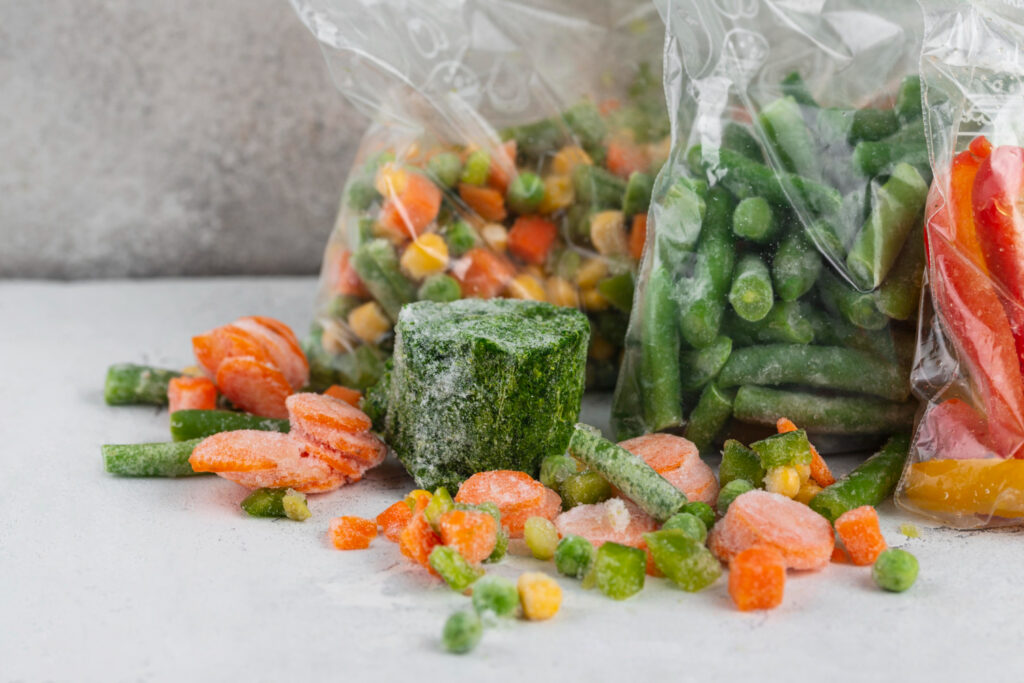
Vacuum sealing can significantly enhance food preservation in restaurants, reducing waste and extending the shelf life of ingredients. This technique involves using a vacuum sealer to remove air from packaging, creating an airtight environment. By eliminating exposure to air, vacuum sealing slows down the spoilage process and keeps food fresher for a longer period.
Restaurants benefit from vacuum sealing by maintaining the quality and taste of their ingredients. Less oxygen in packaging means less growth of bacteria and mold, which are the primary causes of food spoilage. Additionally, vacuum-sealed foods retain their color, flavor, and texture, making them look and taste much better when served.
Another advantage of vacuum sealing in restaurants is the efficient use of storage. Because the air has been removed, vacuum-sealed packages take up less space. This allows for better organization and more effective use of storage areas, leading to a more streamlined kitchen operation.
Table of Contents
Benefits of Vacuum Sealing in Restaurants
Vacuum sealing offers multiple advantages for restaurants, including better resource management and maintaining food quality. By using a vacuum sealer, restaurants can ensure longer shelf life for their ingredients, reduce spoilage, and maintain the nutritional value and texture of their food.
Extending Shelf Life and Reducing Food Waste
Vacuum sealing can significantly extend the shelf life of items. For example, vacuum-sealed meats, vegetables, fruits, and cheeses can last three to five times longer than those stored using conventional methods. This reduction in spoilage means less food waste, which is both cost-effective and environmentally friendly. By removing oxygen and creating an airtight seal, vacuum sealing slows down the growth of microorganisms and bacteria that cause food to spoil.
Improving Food Quality and Freshness
By using a commercial vacuum sealer, restaurants can retain the natural flavor, texture, and nutritional value of their food. Vacuum sealing prevents exposure to air, which can lead to oxidation and degradation. This is particularly important for maintaining the quality of delicate items like fresh herbs, fruits, and vegetables. Additionally, vacuum sealing helps retain moisture in meats, assuring that they remain tender and flavorful.
Enhancing Food Safety and Storage Efficiency
Vacuum sealing creates an environment that is less conducive to the growth of bacteria and other pathogens. This improves food safety by reducing the risk of contamination. By removing oxygen, vacuum sealing also decreases the likelihood of freezer burn, preserving the quality of frozen items. Furthermore, vacuum-sealed packages are compact and stackable, making it easier to optimize storage space in both refrigerators and freezers. This efficiency can be a significant advantage for busy kitchens with limited storage capacity.
By addressing key areas such as shelf life, quality, and safety, vacuum sealing serves as an invaluable tool for restaurants. These benefits help improve operational efficiency and ensure that customers receive the freshest, highest-quality meals possible.
Operational Considerations for Vacuum Sealing
Effective vacuum sealing in restaurants guarantees the prolonged freshness, reduces food spoilage, and maintains nutritional value. This operational guide provides key areas to focus on to ensure efficient and cost-effective vacuum sealing practices.
Choosing the Right Equipment
Selecting the appropriate vacuum sealer for a commercial setup is necessary. There are two main types: chamber vacuum sealers and external vacuum sealers. Chamber vacuum sealers are ideal for high-volume operations as they handle liquids, such as soups and marinating ingredients, effectively.
External vacuum sealers, while more affordable, are better suited for sealing solid foods and are useful for smaller kitchens. Consider the durability and maintenance of the equipment as well, since frequent use in a busy restaurant setting demands sturdy machines that are easy to clean and service. Make sure to use high-quality vacuum sealer bags to ensure the best results and food safety.
Best Practices for Vacuum Sealing Foods
To achieve optimal results, start with fresh, high-quality ingredients. Foods should be clean and dry before sealing. For cook-and-chill methods, consider blanching vegetables before vacuum sealing to preserve color and texture. When sealing liquids or marinades, use seal bags designed for liquids or pre-freeze the liquids to prevent them from interfering with the sealing process.
It is important to label sealed packages with the date and contents to keep track of storage times. Use vacuum sealing not only for raw ingredients but also for leftovers, which helps in reducing food waste and food spoilage. Properly sealed foods maintain their nutritional value and quality over extended periods.
Cost-Effectiveness and Savings
Investing in a commercial-grade vacuum sealer can lead to significant savings for restaurants. By extending the shelf life of food items, restaurants can buy in bulk, which is often more economical and reduces the frequency of deliveries. This helps manage budgets effectively.
Using vacuum sealing for long-term food storage also minimizes waste, ensuring that less food goes bad before it can be used. This approach is cost-effective and reduces the amount of food thrown away due to spoilage. Additionally, the initial investment in a quality vacuum sealer and seal bags pays off in the long run through reduced food costs and improved efficiency.
Conclusion
Vacuum sealing offers a robust solution for restaurants aiming to enhance food preservation. By removing air, it helps extend the shelf life of various ingredients and maintain their nutritional values. Using vacuum sealing can also streamline kitchen operations by reducing waste and minimizing spoilage. Incorporating this technology can lead to cost savings and improved food quality, making it a valuable addition to any restaurant.
